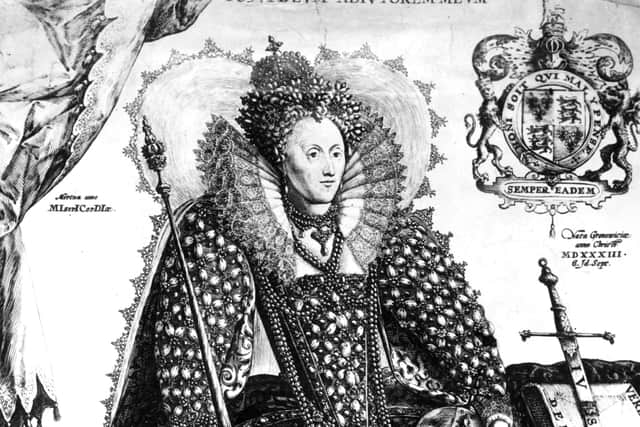Book review: England’s Insular Imagining – The Elizabethan Erasure of Scotland, by Lorna Hutson
Lorna Hutson is a tremendously distinguished academic; both Merton Professor of English Literature at Oxford University, and chair of the Centre for Mediaeval and Early Modern Law and Literature at St Andrews.
Yet in her new book England’s Insular Imagining – subtitled “the Elizabethan Erasure of Scotland” – her formidable scholarship is matched by what reads like genuine anger and indignation at Scotland’s fate, in its interactions with England over the last thousand years or so. Her subject is not only the legal and constitutional relationship between Scotland and England, but, crucially, the imaginative worlds that underpinned those realities; and she begins, therefore, with the famous Ditchley portrait of Queen Elizabeth I, the gorgeous 16th century Virgin Queen in gold-jewelled white, who stands on the map of her sceptred isle – or at least of its south coast, seen as the essential bulwark against the powers of Europe.
Advertisement
Hide AdAdvertisement
Hide AdHutson argues with terrific force and detail that this kind of imagery was crucial in creating the idea of England as an island nation, endowed with divine protection by its surrounding seas; an image which pervades early modern English thought, politics and literature, including John of Gaunt’s mighty “sceptred isle” speech in Shakespeare’s Richard II, and creates obvious problems in acknowledging the very existence of Scotland, as the other sovereign island kingdom.


Hutson then turns to a detailed and shocking account of the so-called “Rough Wooing” of the 1540s, a rampage of devastation by English armies through the Lothians and Borders which ravaged abbeys, towns, hospitals, farmsteads and crops for mile upon mile, and reduced the port of Leith to rubble. The aim of this invasion, which ended in failure, was to gain control over Scotland by enforcing the betrothal of the infant queen Mary to Henry’s young son Edward; but Hutson’s interest lies in tracing its subsequent almost complete disappearance from both English and Scottish history. Most Scots certainly do not know that it was a punishment rampage by an English army, rather than the excesses of Scotland’s own Protestant Reformation, that reduced our beautiful Borders abbeys to ruins; and English historians and politicians were to be found, within a few decades, denying that they had ever made any attempt to subdue Scotland by force.
And from this moment of denial, Hutson develops and elaborates a most magnificent constitutional and literary history, including profound chapters on the role of imaginative works such as Edmund Spenser’s Faerie Queene, and of course Shakespeare’s history plays and tragedies, in constructing England’s sense of itself as a blessed island nation with a maritime imperial destiny, and a natural right to claim sovereignty over all the peoples of these islands, including the relatively barbarous and benighted Scots.
In that sense, she makes a powerful case for the idea that the other nations of the UK were, in fact, the first victims of England’s imperial project, and of the many self-justificatory false narratives which came to surround it; and although Scotland eventually traded its sovereignty for the status of a junior partner in that project, it remains striking to note how many of those tropes and ideas about Scotland’s general incapacity or implausibility as a nation, cultivated half a millennium ago, remain present in the “too wee, too poor, too stupid” strand of the argument against Scottish independence today.
Against the backdrop of this powerful narrative, it is remarkable that some Scots still persisted in trying to preserve a sense of Scotland’s true history; not least of the powerful and European-minded late mediaeval culture that was ravaged by the wars of the 16th century. If nations are always “imagined communities”, in others words – as Benedict Anderson famously argued, and Hutson fully accepts – then both Scotland and England still have a great deal of history to learn, hard truths to accept, and reimagining to achieve, before any fully respectful mutual relationship can emerge; but Hutson’s powerful book is the kind of academic work which demonstrates that that process of reimagining has begun, and may now be unstoppable.
England’s Insular Imagining – The Elizabethan Erasure of Scotland, by Lorna Hutson, Cambridge University Press, £30